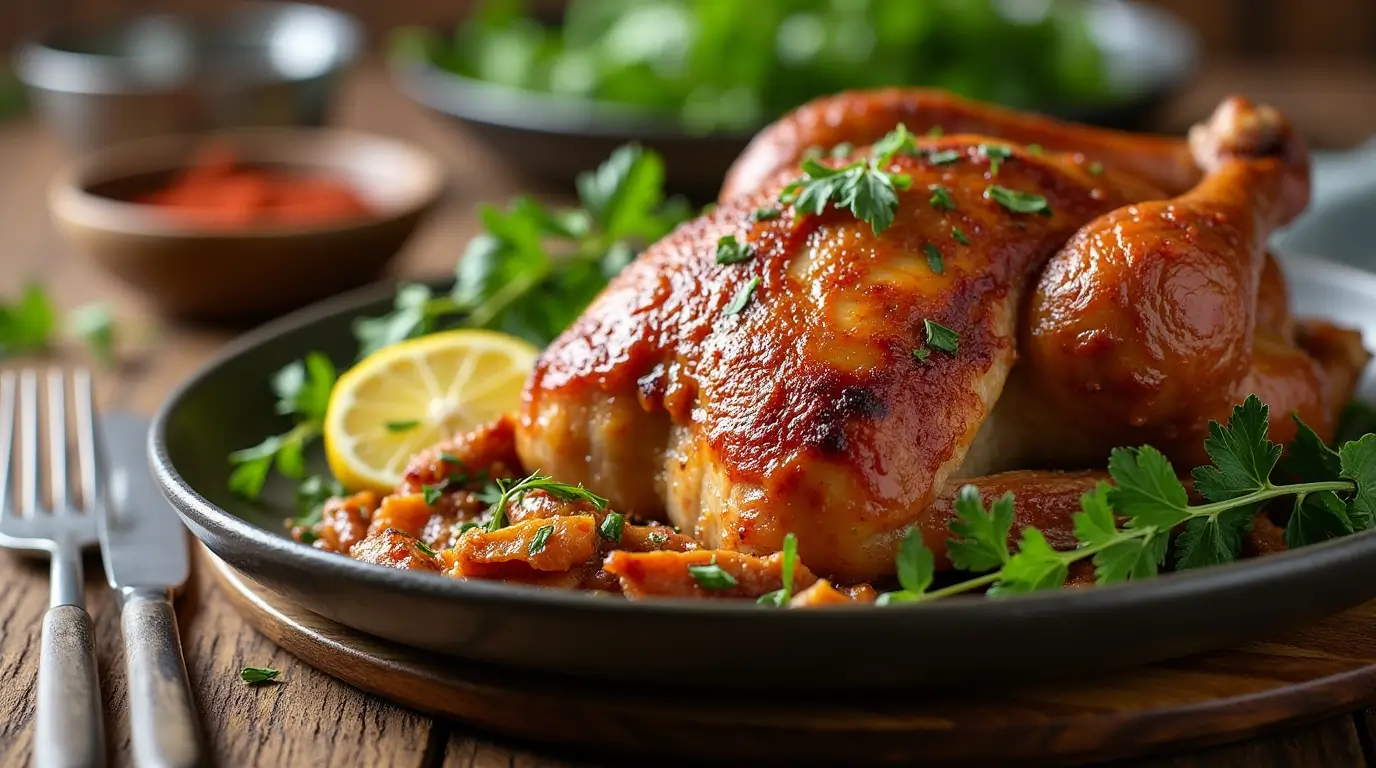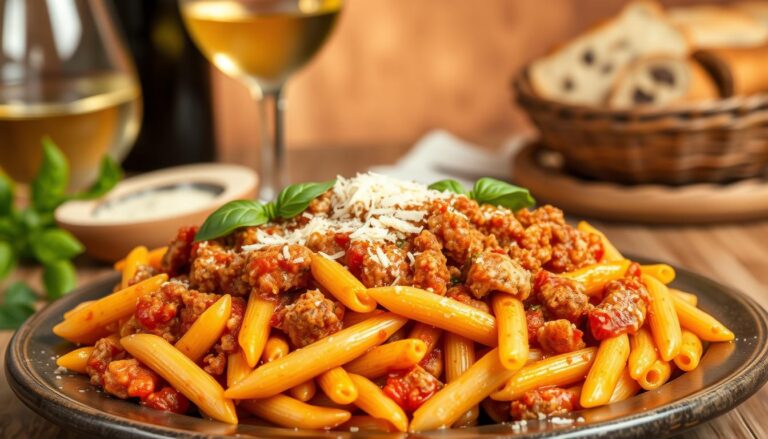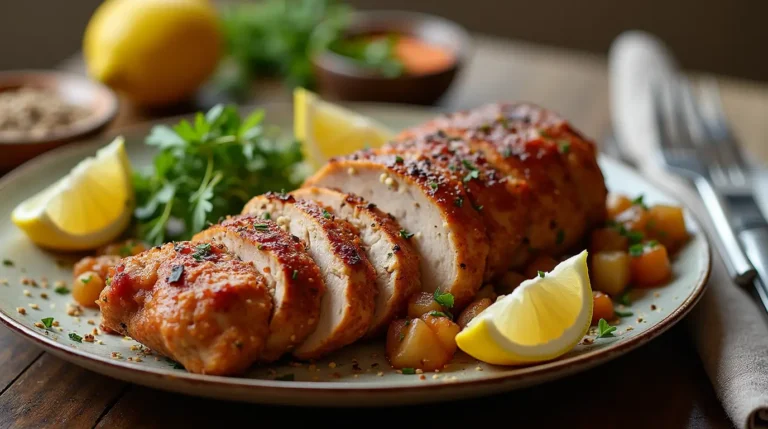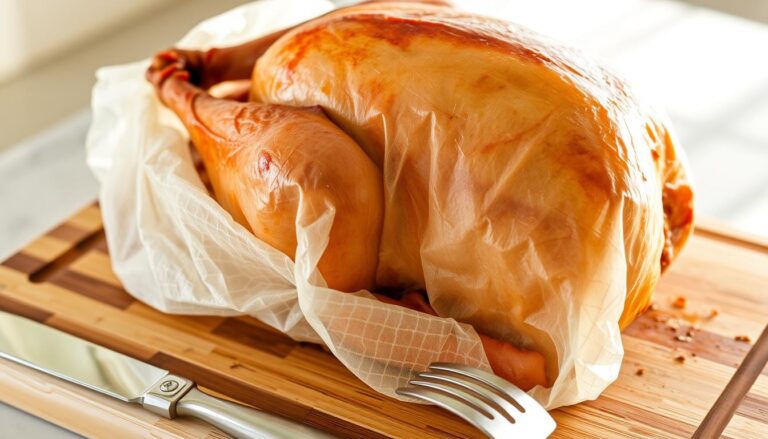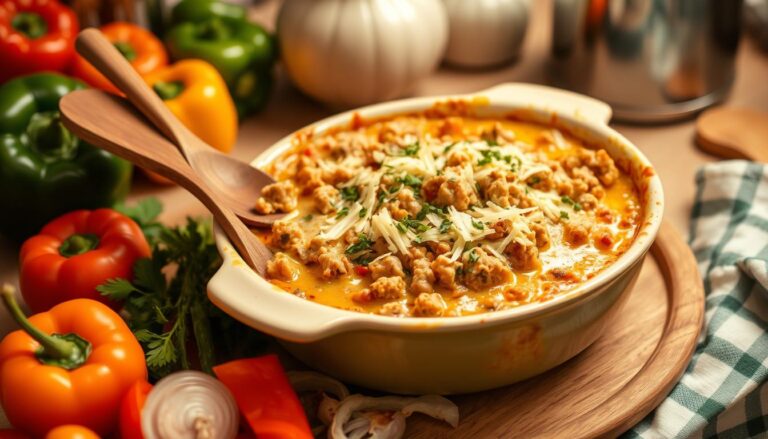How to Cook Wild Turkey – Tips for Tender & Flavorful Meat
The crisp morning air and the weight of a freshly harvested wild turkey remind me of hunting traditions passed down through generations. Learning how to cook wild turkey isn’t just about preparing a meal—it’s about honoring the game and transforming a challenging cut of meat into a culinary masterpiece.
Wild turkey meat is lean and has a rich flavor. This comes from its natural diet and active lifestyle. Wild turkey cooking tips are crucial because this meat can quickly become dry if not prepared correctly.
Your success in cooking wild turkey depends on understanding its unique characteristics. The breasts and legs are the most prized cuts, with an average wild turkey weighing between 15 to 25 pounds. Hunters know that a large tom can provide up to four meals from its breast meat alone.
Preparation is key when learning how to cook wild turkey. Each cut—from the drumsticks to the thighs—requires specific cooking techniques to ensure tenderness and maximize flavor. Whether you’re a seasoned hunter or a curious home cook, mastering wild turkey preparation will elevate your game meat cooking skills.
Table of Contents
Understanding Wild Turkey
Wild turkey offers a unique taste that’s different from domestic turkey. When you try wild turkey recipes, you’ll find a meat unlike what’s in most stores.
These birds roam free, eating a wide range of foods. This makes their flavor unique. Unlike farm turkeys, wild turkeys eat:
- Wild grains
- Insects
- Acorns
- Green plant shoots
What Makes Wild Turkey Unique?
Wild turkey meat is lean and muscular. When you cook wild turkey breast, you’ll notice a firmer texture and deeper flavor. This is because of their active lifestyle and varied diet.
Nutritional Powerhouse
Cooking wild turkey is not only tasty but also very healthy. This meat is packed with protein and offers many health benefits:
- High protein content for muscle development
- Rich in vitamin B6 and B12 for brain health
- Excellent source of selenium to boost immune function
- Contains zinc for skin health
- Natural source of tryptophan to improve mood
Wild turkey’s nutritional profile makes it great for those who care about health. It’s perfect for hunters and food lovers who want to add a nutritious twist to their wild turkey dishes.
Preparing for Cooking
Preparing a wild turkey for cooking needs careful attention and proper handling. The success of your dish depends on how well you clean and prepare the meat. Knowing the best way to cook wild turkey starts with thorough preparation.
Field-dressing your wild turkey is a key first step. You should process the bird quickly to prevent bacterial growth and keep the meat quality high. Here are the main steps to clean your wild turkey properly:
- Cool the bird immediately after harvesting
- Use a sharp knife for precise cleaning
- Remove internal organs carefully
- Inspect the meat for any signs of disease
- Rinse the cavity thoroughly with cold water
Essential Cleaning Tools
Proper preparation needs specific tools for safe and efficient processing. The right equipment makes your wild turkey cooking methods smoother:
- Sharp boning knife – for precise cuts
- Clean cutting board
- Disposable gloves
- Cooler with ice
- Meat thermometer
Meat Preservation Techniques
After cleaning, proper storage is key. Wrap the turkey meat carefully and store it at the right temperature. Properly wrapped wild turkey can stay fresh for months when frozen. Remember, wild turkey is leaner than domestic turkey, so extra care is needed to maintain its quality.
Pro tip: Always keep your wild turkey meat at or below 40°F to prevent bacterial growth and ensure food safety.
Key Cooking Methods for Wild Turkey
Learning to cook wild turkey is key to making delicious dishes. Whether you’re new to cooking or have experience, these techniques will make your wild turkey meals unforgettable.
Cooking wild turkey can be tricky, but with the right techniques, you’ll wow your guests. Let’s look at three main cooking methods to improve your wild turkey dishes.
Roasting: The Traditional Method
Roasting is a timeless way to highlight wild turkey’s rich flavors. Here’s how to do it right:
- Preheat your oven to 400 degrees Fahrenheit
- Season the turkey with a spice rub featuring:
- ½ teaspoon onion powder
- ½ teaspoon garlic powder
- ½ teaspoon smoked paprika
- Roast for 15-20 minutes
- Check internal temperature reaches 160-165 degrees Fahrenheit
- Rest the meat for 5 minutes before slicing
Grilling for a Smoky Flavor
Grilling wild turkey adds a smoky taste that boosts the meat’s natural flavors. Pro tip: Use mesquite wood for a true smoky flavor.
- Marinate turkey for 4-6 hours
- Grill at medium-high heat
- Cook until 90% done on one side
- Flip briefly to complete cooking
- Aim for internal temperature of 165°F
Slow Cooking for Ultimate Tenderness
Slow cooking makes tough wild turkey cuts tender and delicious. It’s great for older birds or less tender cuts.
- Cook on low heat for 6-8 hours
- Add liquid to prevent drying
- Use herbs and spices for extra flavor
- Ensure internal temperature reaches 165°F
Mastering these cooking methods will help you make wild turkey dishes that impress everyone.
Flavoring and Basting Techniques
To make your wild turkey truly special, you need to master flavoring and basting. Learning about marinades, rubs, and basting can take your cooking to the next level. It ensures your meal is not just good, but amazing.

Wild turkey recipes need special care to stay tender and full of flavor. Marinades and rubs are key to bringing out the best in your wild game.
Applying Powerful Marinades and Rubs
Creating the right marinade or rub can change your wild turkey. Here are some top ingredients for flavor:
- Kosher salt: 4.5 ounces for optimal seasoning
- Brown sugar: 3/4 cup for subtle sweetness
- Worcestershire sauce: 1/4 cup for depth
- Fresh herbs like thyme and bay leaves
- Crushed garlic and quartered onions
Best Basting Techniques to Enhance Flavor
Basting is key to keeping your wild turkey moist and tasty. Here are some pro tips:
- Baste every 30-45 minutes during cooking
- Use varied basting liquids:
- Melted butter
- Olive oil
- Broth
- Wine
- Citrus juices
- Maintain oven temperature by quick basting
- Use a large spoon instead of a traditional baster
Try out these wild turkey recipes and basting methods. They’ll help you make a dish that will wow your guests and show off your cooking talent.
Cooking Times and Temperatures
Cooking wild turkey right means knowing your temperatures. It’s key to a tasty and safe dish. You want to keep the meat juicy and tender.
Key Temperature Guidelines
Temperature is crucial when cooking wild turkey. Unlike store-bought birds, it needs extra care to avoid dryness. Here are the important temperature points for different turkey parts:
- Turkey breast: Cook to 157°F (69°C) for optimal moisture
- Turkey thighs: Target 175°F (79°C) for tender meat
- Overall food safety temperature: 160°F (71°C)
Using a Meat Thermometer Accurately
Getting the right temperature is your top tip for cooking wild turkey. Here’s how to use your meat thermometer correctly:
- Insert the probe 1/2 to 1 inch from the internal cavity
- Avoid touching bones, which can give false readings
- Check multiple spots to ensure even cooking
Remember, the turkey’s temperature will rise a bit after it’s off the heat. Let it rest for 30 minutes. This helps the juices spread and finishes the cooking.
Enhancing Moisture in the Meat
Keeping wild turkey meat juicy and flavorful can be tough. Wild turkey cooking methods need special care to avoid dry, tough meat. The secret to success is brining and strategic stuffing.
Brining is key for wild turkey breast. It breaks down tough fibers and adds moisture. Here’s a simple brining guide:
- Use 1 tablespoon of kosher salt per 5 pounds of turkey
- Add 1/2 teaspoon of dried herbs per 5 pounds
- Sprinkle 1/4 teaspoon of black pepper per 5 pounds
The Art of Dry Brining
Dry brining is great for cooking wild turkey breast. The process involves:
- Patting the turkey dry with paper towels
- Generously applying salt mixture
- Refrigerating for 1-3 days before cooking
Stuffing for Added Moisture and Flavor
Stuffing is more than just flavor—it keeps your turkey moist. Fill the cavity with aromatic herbs like rosemary, thyme, and sage. Citrus fruits, garlic, and onions also help keep moisture in during cooking.
Pro tip: Always ensure your stuffing reaches a safe internal temperature of 165°F to prevent foodborne illness.
By using these wild turkey cooking methods, you’ll make your game meat juicy and delicious.
Side Dishes That Pair Well With Wild Turkey
Creating the perfect meal is more than just the main course. Wild turkey recipes are even better with the right side dishes. These dishes can turn a simple meal into a memorable dining experience.
Traditional Sides to Elevate Your Wild Turkey
Classic side dishes can really make wild turkey dishes stand out. Here are some traditional options that highlight the flavor of game meats:
- Roasted root vegetables with herbs
- Wild rice pilaf
- Cranberry compote
- Sage-infused cornbread stuffing
Creative Pairing Ideas for Culinary Excitement
Try new things with wild turkey recipes by pairing it with unexpected side dishes. These dishes will surprise and delight you:
| Side Dish | Preparation Technique | Cooking Time |
|---|---|---|
| Smoked Hasselback Potatoes | Smoked at 350°F | 45-50 minutes |
| Green Papaya Salad | Fresh lime dressing | No cooking required |
| Carrots with Feta and Honey | Smoked at 350°F | 30-35 minutes |
Each side dish brings a unique texture and flavor. They can make your wild turkey dish go from good to exceptional. Try these ideas to make meals that will wow your guests and satisfy your love for cooking.
Troubleshooting Cooking Issues
Cooking wild turkey can be tricky because it’s lean. This meat needs special care to avoid dryness and keep its flavor. Knowing how to cook wild turkey and using the right tips can help you steer clear of common problems.


Preventing and Managing Dry Meat
Wild turkey meat dries out fast because it has little fat. To fight this, try these methods:
- Brine the turkey before cooking to add moisture
- Use a meat thermometer to monitor internal temperature
- Cover the turkey with foil during initial cooking stages
- Avoid overcooking by removing meat at 160°F
Rescuing Overcooked Wild Turkey
If your wild turkey is dry, don’t give up. Here are ways to save the meat:
- Slice thinly and serve with extra gravy
- Shred meat for sandwiches or tacos
- Use in casseroles or hearty soups
- Chop and mix with mayonnaise for a turkey salad
| Issue | Solution |
|---|---|
| Dry Breast Meat | Slice thin, add moisture-rich sauce |
| Tough Dark Meat | Slow cook or pressure cook for tenderness |
| Overcooked Texture | Repurpose in moisture-rich dishes |
By learning these wild turkey cooking tips, you can make a tasty meal even if it’s not perfect the first time. Remember, the more you practice, the better you’ll get at cooking wild turkey!
Serving Suggestions and Presentation
Turning wild turkey into tasty dishes is more than cooking. The way you present it can make a big difference. Even simple recipes can look like they were made by a pro.
For a stunning presentation, focus on how you plate and garnish. You want to highlight the turkey’s natural beauty and add flavor and looks.
Creative Serving Strategies
- Slice wild turkey against the grain for maximum tenderness
- Arrange meat on a large wooden cutting board for rustic appeal
- Use fresh herbs as natural decorative elements
- Create height and dimension with strategic meat placement
Garnishing Tips for Visual Impact
Fresh herbs like rosemary, thyme, and sage can make your dish pop. Sprinkle chopped herbs around or use them as decorations. Citrus slices add color and taste.
Pair your turkey with sides that match its look. Roasted veggies or a colorful salad can make your plate stand out. It will wow your guests.
“A beautifully presented dish is a feast for both eyes and palate.”
Leftover Wild Turkey Ideas
Turn your roasted wild turkey into new, tasty meals that everyone will love. With 42 wild turkey recipes, you’ll always have something delicious to make. Most recipes are quick, ready in about 1 hour, or even just 20 minutes.
Wild turkey recipes are super versatile. You can make everything from hearty one-pot dishes to tasty sandwiches in about 35 minutes. Try making turkey tetrazzini with veggies and bacon, or a panini with cranberry sauce and stuffing. About 57% of these recipes are easy, perfect for cooks of all levels.
Remember to store leftover turkey safely. It’s good for 3 to 4 days in the fridge. For longer, freeze it up to 6 months in a sealed container. About 30% of the recipes are freezer-friendly, helping you plan meals ahead while keeping the turkey’s flavor.
Pro tip: Always heat leftover turkey to 165°F to keep it safe. With a bit of creativity, your wild turkey can lead to many exciting meals.
FAQ
How is wild turkey meat different from store-bought turkey?
What’s the most important tip for preventing dry wild turkey meat?
Can I cook wild turkey the same way as a store-bought turkey?
What’s the best cooking method for wild turkey breast?
How long can I store wild turkey meat?
Do I need any special equipment to prepare wild turkey?
How do I prevent wild turkey from tasting too gamey?
Is wild turkey healthier than store-bought turkey?
Did You Try This Recipe ?
There are no reviews yet. Be the first one to write one.

